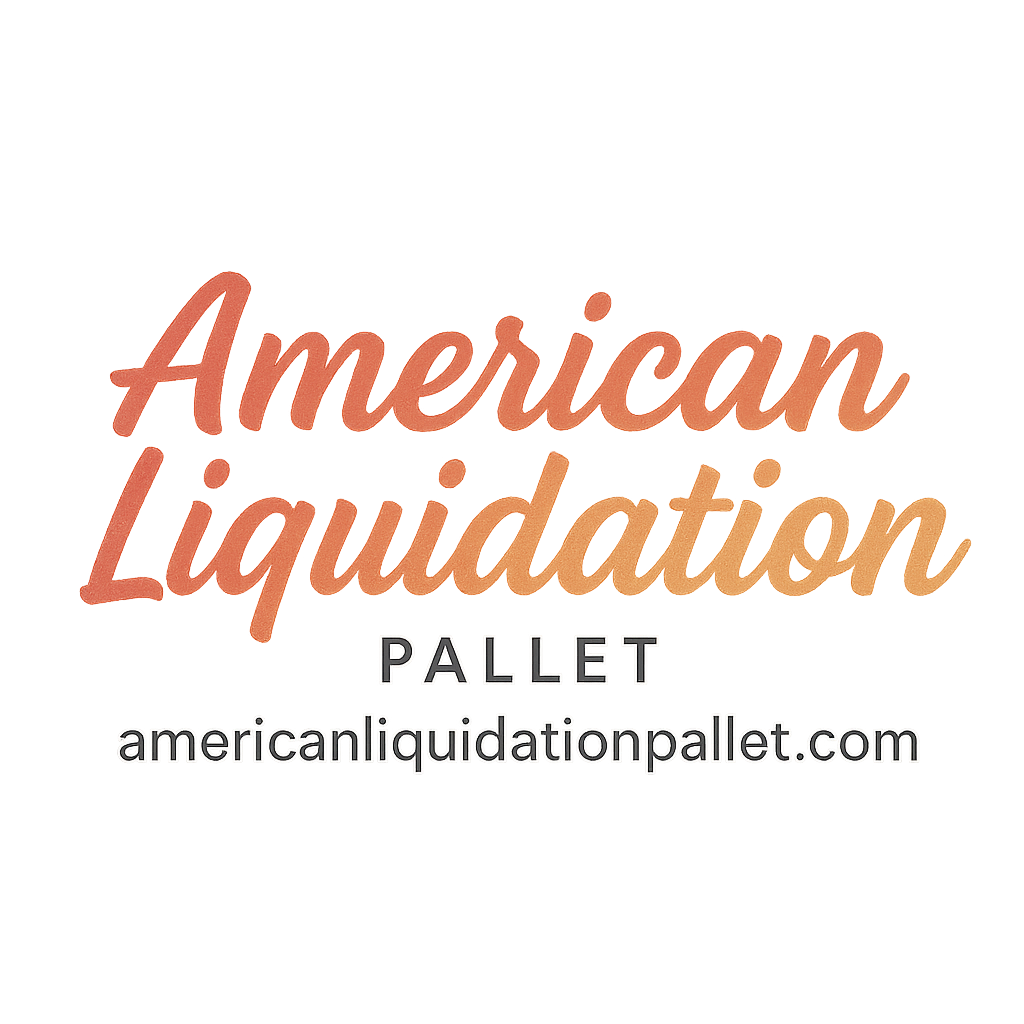Introduction: Why Branding Matters for Liquidation Stores
Let’s face it—when most people hear “liquidation store,” they imagine dusty shelves, cluttered products, and no real identity. But what if I told you that branding could be your biggest asset in flipping that narrative?
In the wild world of resale and liquidation, standing out is your golden ticket. Whether you’re a new player or a seasoned pro in the liquidation game, mastering these branding tips for American liquidation stores can make your store unforgettable.
Need proof? Just check out the countless success stories from stores that used branding to turn pallet loads into profitable empires.
Let’s dive into how to make your liquidation business not just visible—but magnetic.
Tip #1: Define a Clear Brand Identity
What Makes Your Liquidation Store Unique?
Before you print business cards or set up your Shopify store, pause and ask: What’s my angle?
Maybe you specialize in high-end returns. Or maybe you’re the go-to spot for Gen Z looking for trendy overstock items. Whatever it is, defining that uniqueness is your brand’s backbone.
If you’re not sure where to start, check out the basics of American liquidation to better understand your niche.
Aligning Your Identity with Your Audience
Your brand should speak the same language as your audience. Are you targeting bargain hunters? Young entrepreneurs? Fashion-forward flippers?
Explore popular tags like “gen-z”, “young-entrepreneurs”, or “growth” to get a feel for where your store fits in.
Tip #2: Build a Memorable Brand Name and Logo
Naming That Sticks
Your store name needs to pop. Think catchy, easy to spell, and relevant to liquidation or value. Avoid names that sound too generic—no one remembers “Discount Warehouse 37.”
Explore related ideas with the “best sites” and “buying pallets” tags to spark name inspiration.
Logo That Tells a Story
A strong logo is like your store’s handshake. Whether you’re selling on eBay, Facebook, or through your own site, your logo sets the tone.
Pro tip: Keep it simple, scalable, and readable even as a social media icon.
Tip #3: Create a Consistent Online Presence
Website and Social Media Consistency
Whether you’re on Amazon or just launched your own ecommerce site, consistency is key. Use the same colors, tone of voice, and logo across all platforms.
Refer to this helpful guide on buying and sourcing liquidation pallets to streamline your content approach.
Platform-Specific Optimization
Each platform has its own personality. Instagram is visual, TikTok is quirky, and Facebook is great for local connections. Tailor your content accordingly while keeping your branding on-point.
Want to master platforms? Look into selling platforms strategies that match your audience behavior.

Tip #4: Tell Stories that Resonate
Customer Success Stories
Everyone loves a good before-and-after. Showcase stories of customers who saved big or flipped a pallet into serious profits. Real success builds real trust.
Explore case studies and use them in your content to show your value in action.
Behind-the-Scenes Content
People love authenticity. Show your sorting process, delivery day excitement, or even the occasional messy office.
Check out content under the “stories” tag for ideas on crafting relatable content.
Tip #5: Leverage Content Marketing
Blogging and SEO for Authority
Create blogs that answer common questions: Where do liquidation pallets come from? How can I start selling? Is this legit?
Tap into internal resources like tips, trends, and strategies and beginner tips to shape your posts.
Engaging with Targeted Tags and Topics
Use strategic tags like:
These not only improve SEO but connect you with the right community.
Tip #6: Offer Exceptional Customer Experience
Personalized Service in a Discount World
Even if you’re selling discounted returns, treat each buyer like they’re royalty. Fast replies, clear policies, and fair returns can create fans who return—and refer others.
Community Engagement & Trust Building
Engage in groups, reply to comments, and maybe even create a loyalty program. Trust is currency in this business.
Use these strategies in tandem with your content on selling and flipping liquidation goods to double your retention.
Bonus: Branding Mistakes to Avoid
Being Inconsistent
Switching brand colors or changing tone of voice confuses your audience. Keep everything aligned, even when experimenting.
Ignoring Feedback
Whether it’s a comment on your store or a review on eBay, listen and adapt. Feedback is free research.
Conclusion
Branding your liquidation store isn’t just about flashy logos or trendy names—it’s about crafting an experience, building trust, and standing out in a competitive market. These branding tips for American liquidation stores aren’t just strategies—they’re your stepping stones to sustainable success.
Use every pallet as an opportunity, every interaction as a moment to impress, and every piece of content as a story worth sharing.
For more insight and strategy, keep diving into American Liquidation Pallet, your go-to resource for staying competitive in this fast-moving space.
FAQs
1. What’s the most important branding tip for new liquidation stores?
Defining a clear brand identity is step one. Know who you are and who you’re serving.
2. Can I build a brand if I only sell on Facebook or eBay?
Absolutely! Just keep your visuals, tone, and service consistent across platforms.
3. How do I make my liquidation store name stand out?
Keep it short, relevant, and memorable. Bonus points if it hints at value or exclusivity.
4. Should I invest in professional logo design?
Yes! A professional logo builds credibility, especially when selling online.
5. How does content marketing help branding?
It builds trust, positions you as an expert, and helps with search engine visibility.
6. Do customer reviews affect my brand?
Yes, they’re digital word-of-mouth. Collect and display positive reviews whenever possible.
7. Where can I learn more about selling liquidation pallets?
Explore detailed guides like this one on sourcing and success stories to keep learning.


